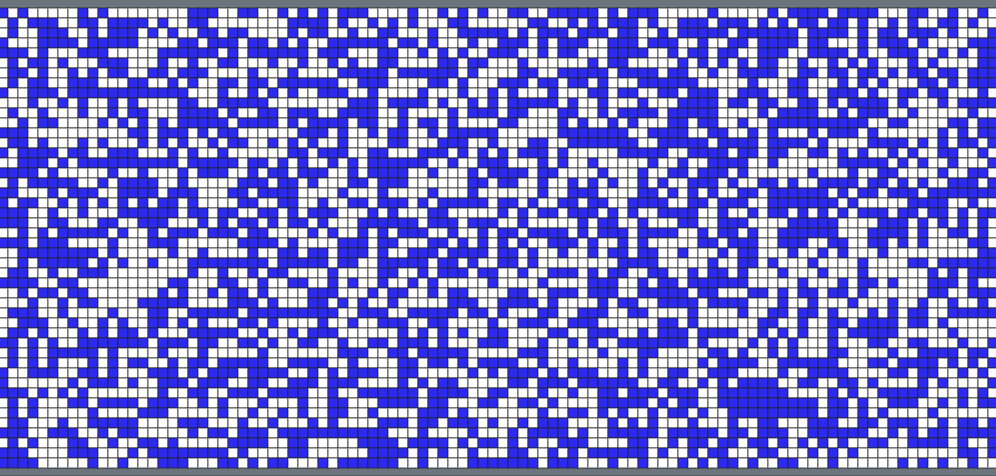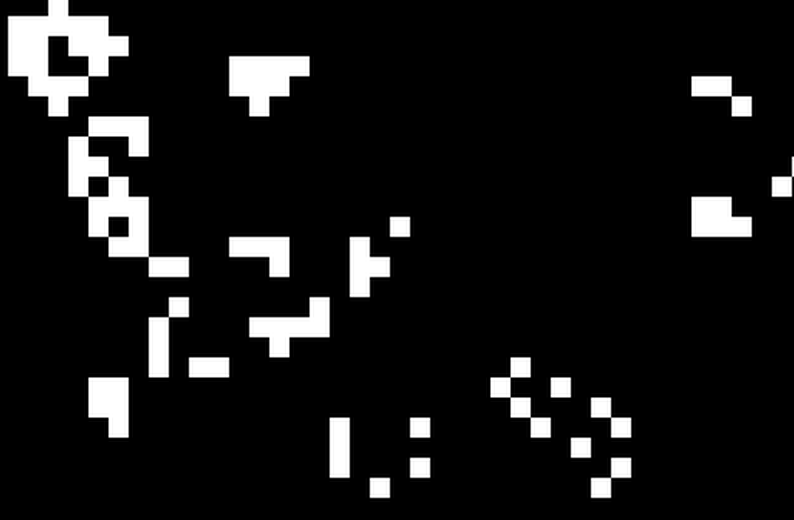
They provide judgment on the strengths of competing hypotheses, and generate unexpected or unsuspected possibilities for biologists to study and prove empirically. In recent times, computer simulations have played an increasingly important role in biology, in testing hypotheses and generating new ones. We use the game to explore issues in symbiopoiesis and evo-devo, where we explore a fractal hypothesis: that self-similarity exists at different levels (cells, organisms, ecological communities) as a result of homologous interactions of two as processes modeled in the Game of Life We show the value of computer simulations to experiment with and propose generalizations of broader scope with novel testable predictions. We look for similarities and differences between two epigenetic models, by Turing and Edelman, as they are realized in Game of Life objects. We show that Conway's organization of rules reflects the epigenetic principle, that genetic action and developmental processes are inseparable dimensions of a single biological system, analogous to the integration processes in symbiopoiesis. We apply it to other biological processes, including symbiopoiesis. This game was designed to explore the evolution of ecological communities. Conway's Game of Life has been widely used for this purpose. 2Institute for Culture and Society, Western Sydney University, Parramatta, NSW, AustraliaĬellular automatons and computer simulation games are widely used as heuristic devices in biology, to explore implications and consequences of specific theories.

1Centro de Ciencias de la Complejidad C3, Universidad Nacional Autónoma de México, Mexico City, Mexico.More information on the 17c/45 Caterpillar is available here and here.Lorena Caballero 1 * Bob Hodge 2 Sergio Hernandez 1 Just as spectacular as the concept of a Turing Machine being built in the Game of Life is the " 17c/45Ĭaterpillar spaceship"-a gigantic pattern involving over 10 million cells that travels across the universe. The details of this construction are available at Paul Rendell's site here. It is possible to build a pattern that acts like a finite state machine connected to two counters."Īlthough it may seem a bit convoluted, this idea became the basis for the construction of a Turing Machine within the Game of Life. It is possible to construct logic gates such as AND, OR and NOT using gliders. This "sliding block memory" can be used to simulate a counter. If three gliders are shot in just the right way, the block will move farther away.

For example, if two gliders are shot at a block in just the right way, the block will move closer to the source of the gliders. "It is possible for gliders to interact with other objects in interesting ways. The Wikipedia article on the Game of Life notes: Wikipedia article on Conway's Game of Life
#Variations of conways game of life free
Dennett has used the analog of Conway's Life "universe" extensively to illustrate the possible evolution of complex philosophical constructs, such as consciousness and free will, from the relatively simple set of deterministic physical laws governing our own universe." For example, philosopher and cognitive scientist Daniel C. The game can also serve as a didactic analogy, used to convey the somewhat counterintuitive notion that "design" and "organization" can spontaneously emerge in the absence of a designer. It is interesting for physicists, biologists, economists, mathematicians, philosophers, generative scientists and others to observe the way that complex patterns can emerge from the implementation of very simple rules. Life is an example of emergence and self-organization. "Ever since its publication, Conway's Game of Life has attracted much interest because of the surprising ways in which the patterns can evolve.

The emergence of complex behavior-sometimes chaotic and other times seemingly orderly-from the simple rules set out by the Game of Life has notable implications in many fields:


 0 kommentar(er)
0 kommentar(er)
